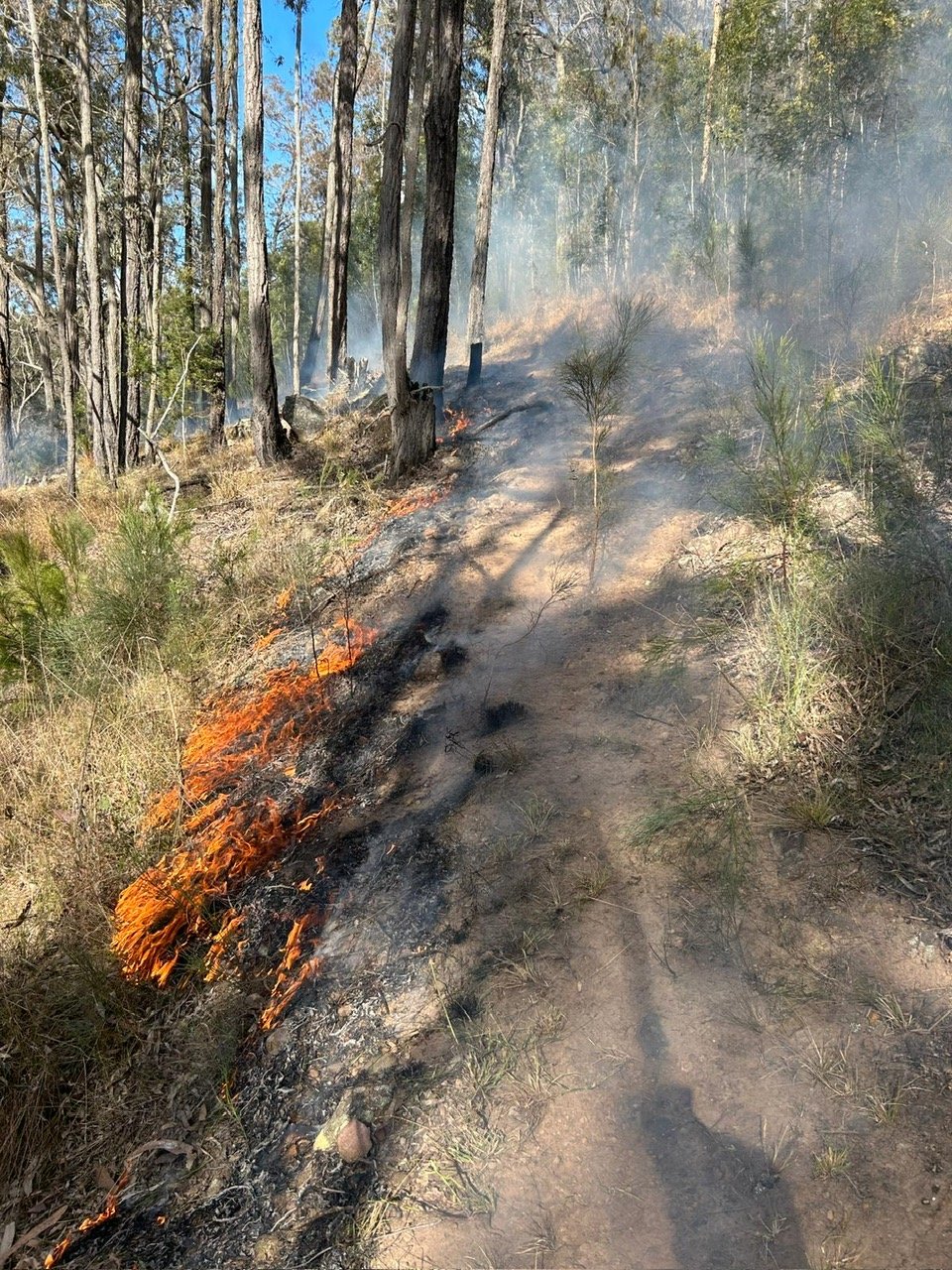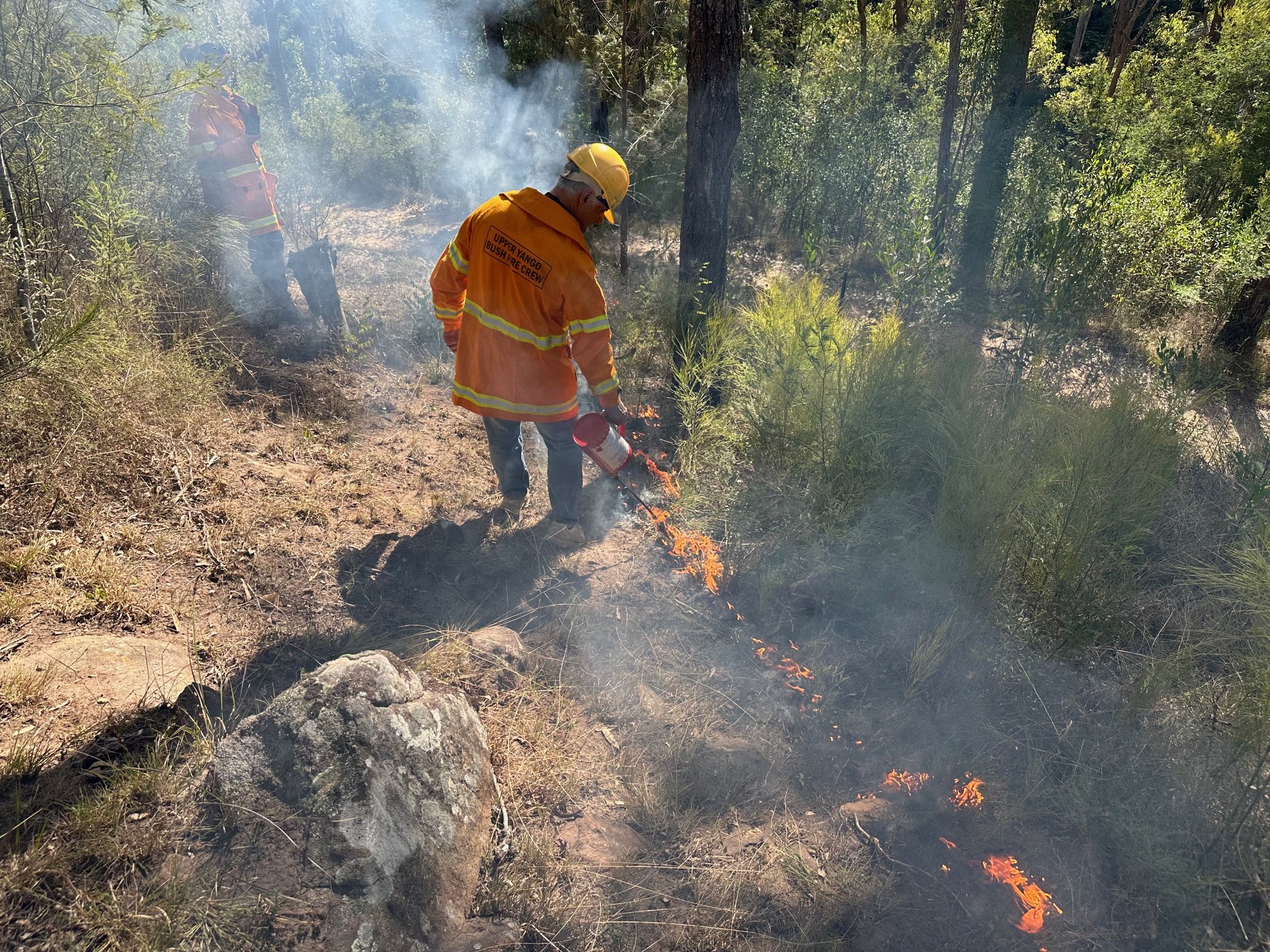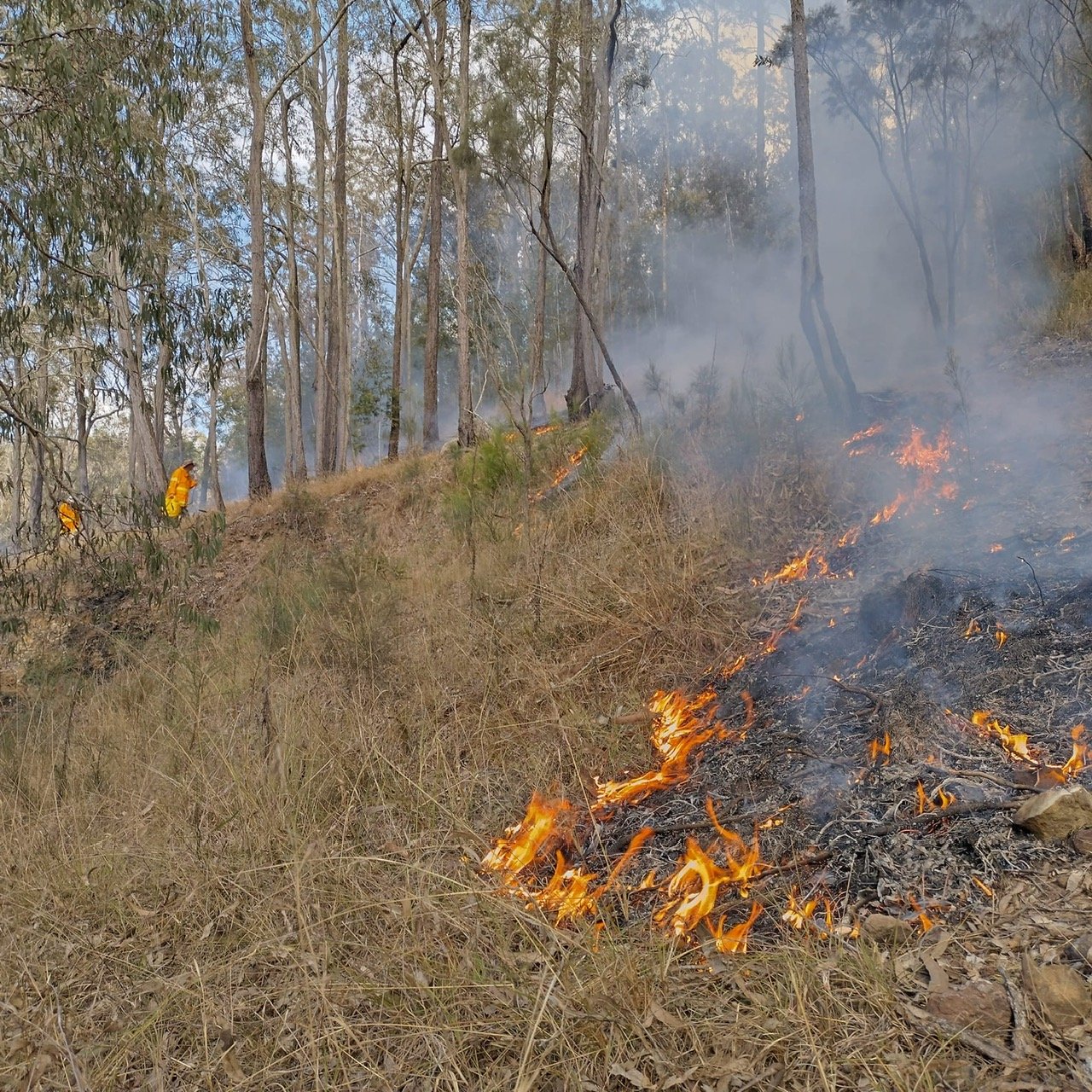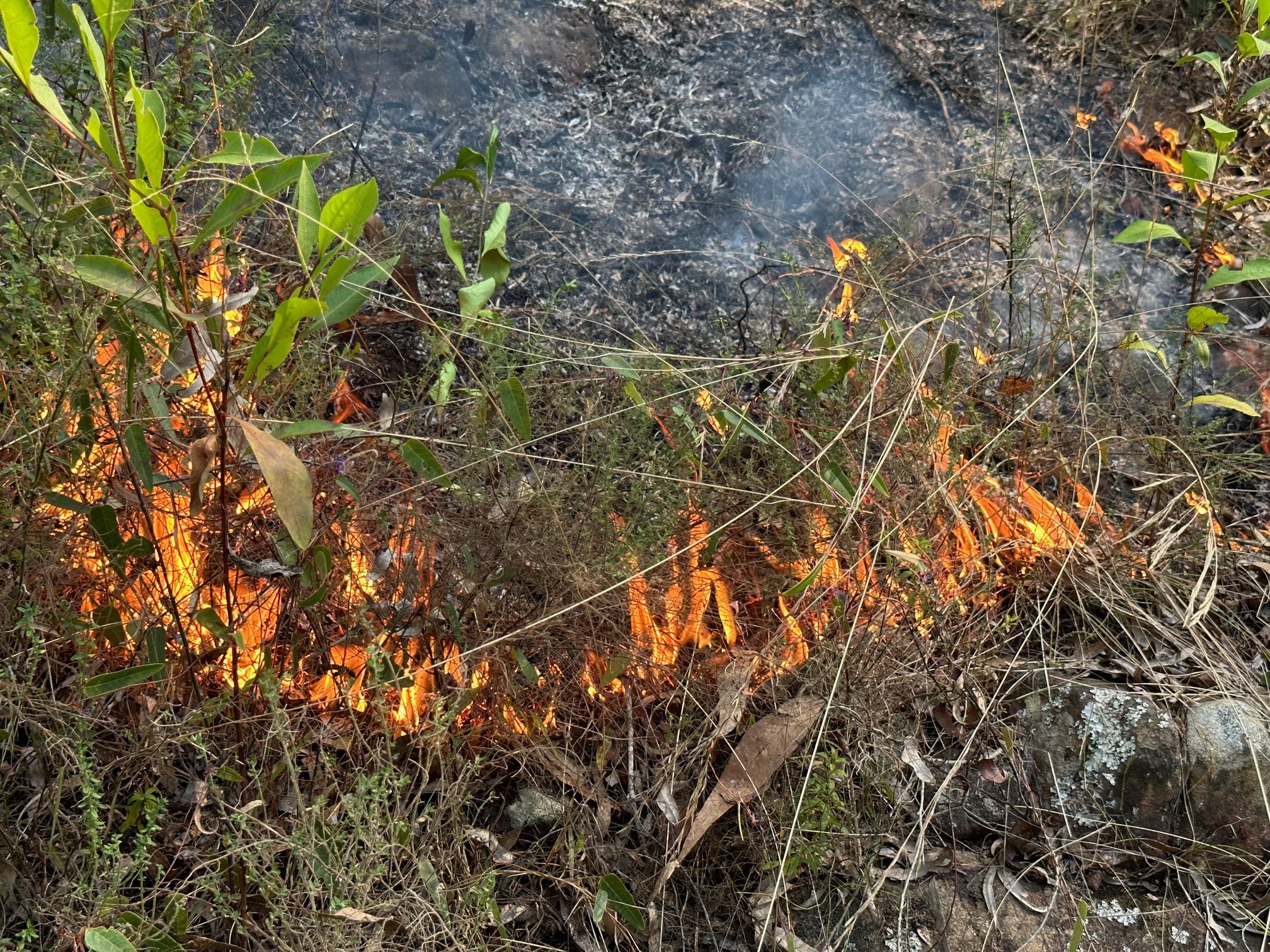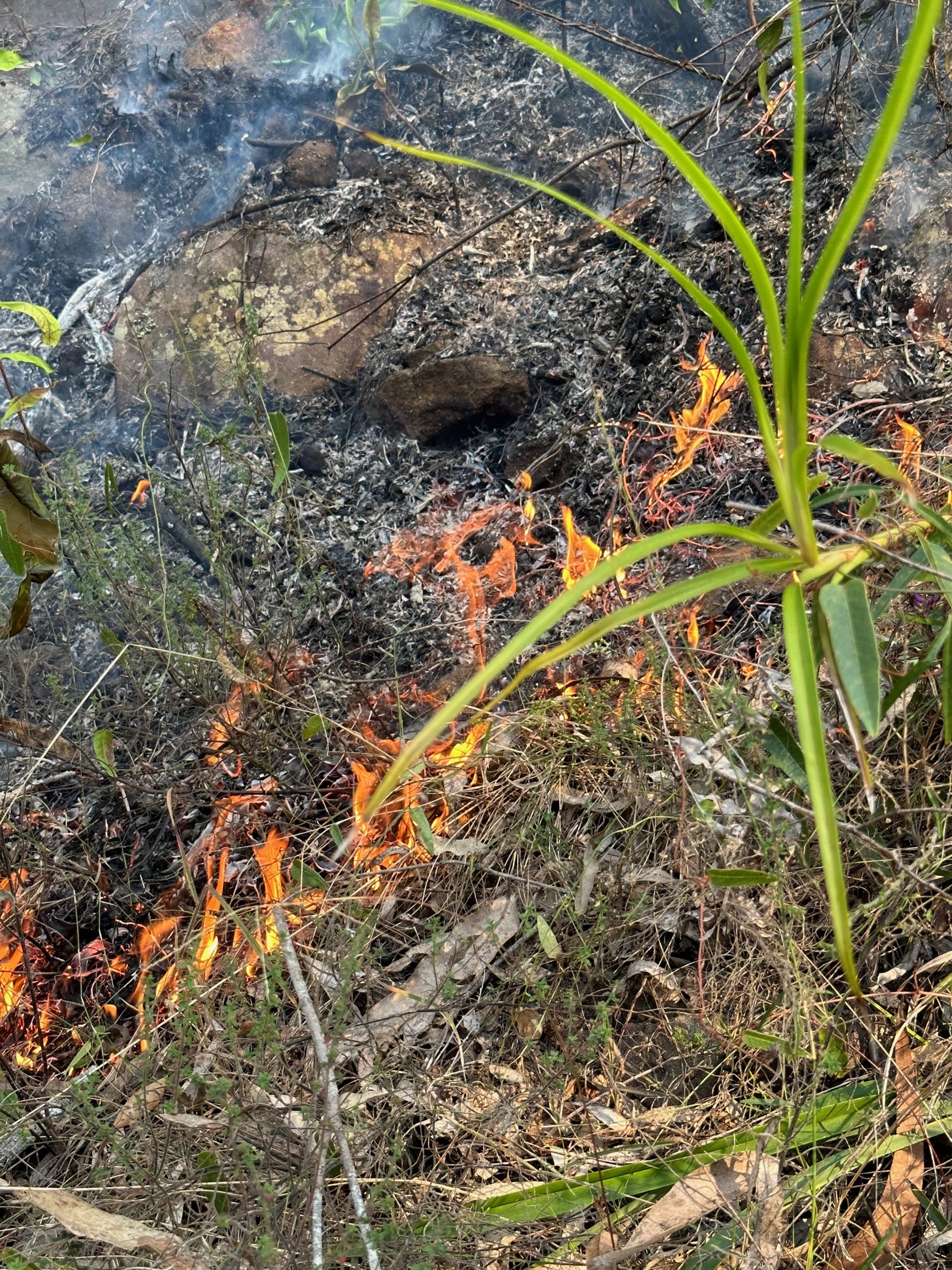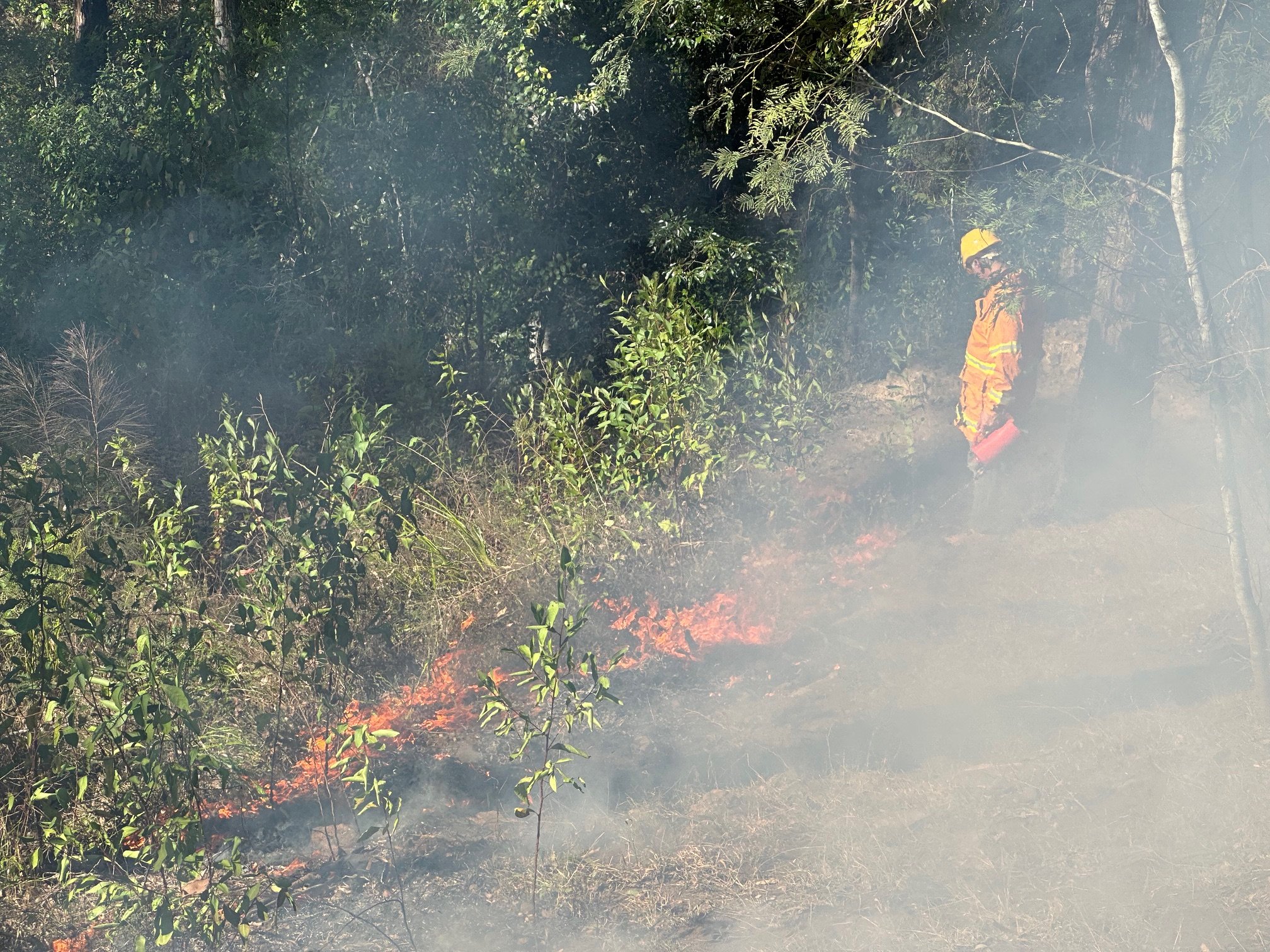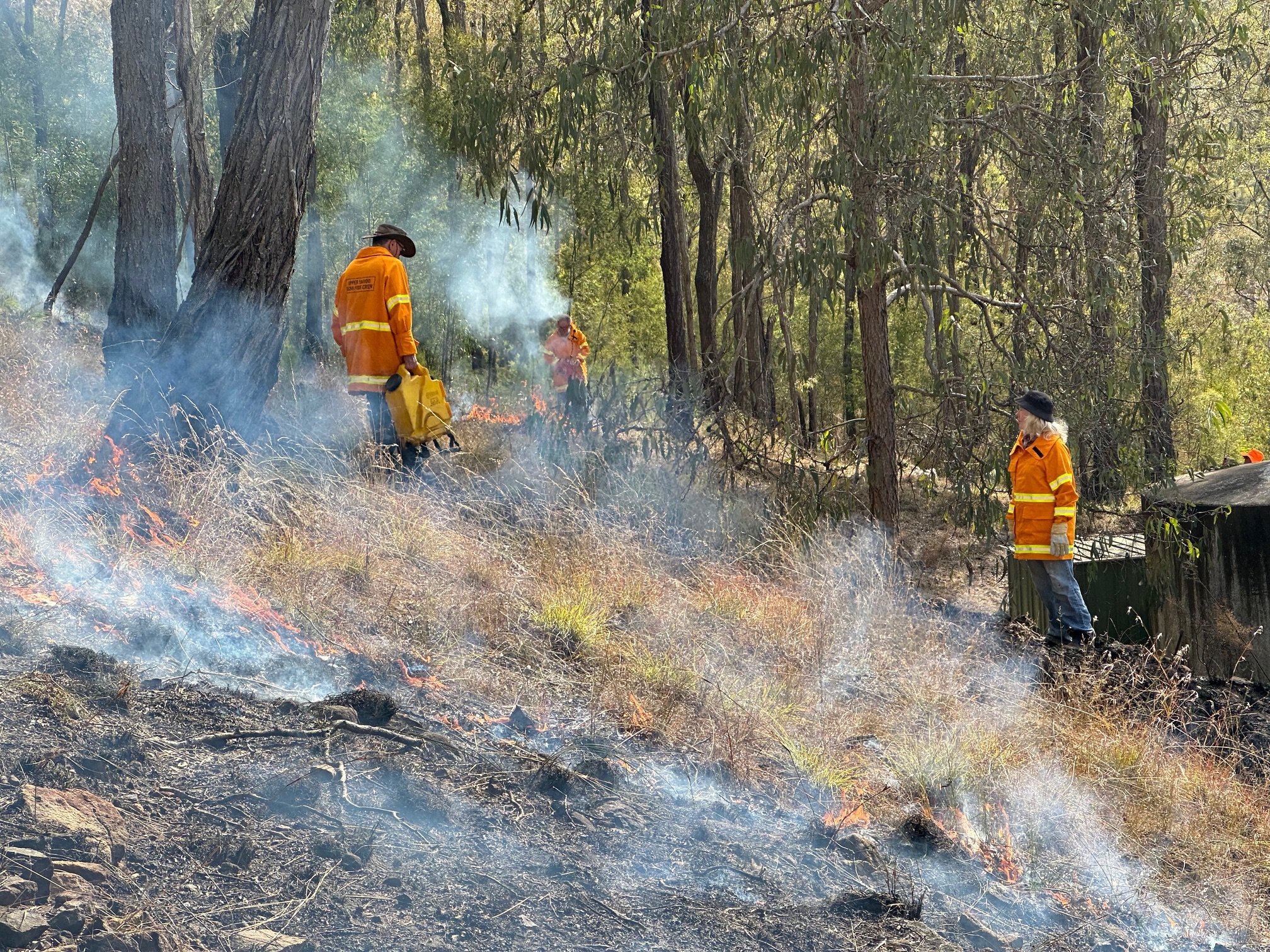
Cool Burning
Cool Burning: A Sustainable Protocol
In August - September 2023, the Upper Yango Bush Fire Crew undertook a series of 10 very low intensity, low temperature ecological burns (<40°C) in APZs. By maintaining the principle of igniting the burns in the top corner of the site and burning slowly down and across the slope, the crew was able to retain very low flame height and minimal scorch height.
In developing a sustainable protocol for cool burns, we hope to better protect the natural environment and the human assets from future devastating bushfires, such as those experienced in 2019 and 20.
Why Cool
Under normal conditions, a fire will destroy the natural seedbank and kill the all important bacteria in the soil. Even a relatively benign fire, can have a destructive impact. The photos below are a good example. The image on the left is from before the burn. the one below demonstrates the power of a cool burn to regenerate the vegetation, and next to that, a patch where a hotter pile burn took place. 18 months later, the differences are clear.
Before 09/23
After 12 months - 09/24
Burn 09/23
Impact of small “Hot” Burn as at 02/25
A Verified Practice
Dr Belinda Kenny, Fire Ecologist with the NSW Nature Conservation Council, has surveyed a range of cool burn sites, 12 months after the burns, to assess the positive and negative impacts of our fire based ecological land management practice. Read her report HERE.
Elisha Duxbury, Research Assistant , Macquarie University Dept of Natural Sciences, undertook ground temperature monitoring at burn site 822, as part of her Upper Yango Flora Survey. Duxbury buried heat sensors at 2cm and 10cm depths across the site and analysing the results in her formal report. She confirmed our Cool Burn was below tolerable temperatures and did not harm the seed bank or soil bacteria. Her full report can be found HERE
Dr Belinda Kenny, Fire Ecologist
Cool Burn Principles, that works for us
Before you light up
Never burn alone. A minimum of three is a good crew.
Always dress appropriately. It’s for your own safety, no one else’s. So be smart.
Always contain the burn within strong containment lines at the top and on either side.
Determine your end point and how you will douse the fire when it gets there.
Check your equipment is working and ready to use before you light up.
Allocate responsibilities and ensure your crew are familiar with the equipment.
Don’t be in a hurry. Remember, you are doing a slow, gentle burn.
Stay vigilant at all times and ready to act when needed.
How to burn
Ignite the burn in a top corner of the burn sector.
Always burn from the top down, never up.
Burn into the breeze, not with it.
If the wind is too strong to burn into, then it’s too strong to burn that day.
Keep the flame height low.
Ankle high is good,
Knee high is OK,
Hip high needs attention.
Head high is out of control.
Use a water spray or hose to subdue an outburst.
Protect trees and shrubs. Use a blower to clear away fuel or use water.
One bit at a time
Don’t be over ambitious. Divide your property into manageable sectors.
Think of sectors as dividing an area into a formal mosaic pattern. Each sector sitting together with its neighbour and easy to identify.
Map the sectors and decide which sectors to burn and when.
Apply the mosaic principle by burning sectors at different intervals over a period of years, not weeks.
Multiple sectors can be burnt in a single year if there is sufficient separation between the sectors identified for burning that year. (At least one sector separating).
Record when you burnt which sector. It’s helpful to make a note of the conditions and a description of how the operation went.
Low and Slow
Very gentle cool burns
Don’t burn it up, burn down
A New Way of Thinking
Current bushfire mitigation practice often undertaken by National Parks, in partnerships with the RFS, and also by a great many private land managers, is to light a prescribed hazard reduction burn at the bottom of a slope and allow the fire to run upwards. It is also the practice to set a fire to burn with the wind, allowing it to push the fire forward at an increased rate. These practices results in hotter, more destructive and dangerous fires. Hazard Reduction Burns are seldom ecologically sensitive, resulting in significant loss of habitat and, harm the soil, seed bank, flora and wildlife.
Without sufficient resources to undertake the majority of HRBs, NPWS must rely on RFS volunteers. As volunteers, their availability is limited. At present, Hazard Reduction Burns are commonly regarded as the quickest and easiest mitigation option, but far from ideal when it comes to supporting the natural environment. The good news is that the major agencies are beginning to adopt less destructive fire practices, encouraged by public discussion around the benefits of indigenous cultural fire management.
The HotSpots Project is a joint initiative of the Nature Conservation Council and the Rural Fire Service. They run comprehensive free community workshops during winter months, in regions across NSW, helping landholders adopt more environmentally aware hazard reduction practices.
Cool Burning
Don’t burn it up, burn down. The simple principles to use fire to reduce fuel loads and reinvigorate the ground cover.

